The crypto world watches in amazement as Shiba Inu’s burn rate keeps hitting new milestones. You might wonder what makes this meme coin‘s burning mechanism so special.
The Shiba Inu burn rate has spiked by 544.55% in recent months, permanently removing millions of tokens from circulation.
When tokens get burned, they’re gone forever – sent to dead wallets where nobody can access them.
The daily burn rate averages around 676 million SHIB tokens, and this steady reduction in supply aims to increase the value of remaining tokens.
Think of it like making baseball cards rare by destroying some of them.
The community drives much of this burning activity through various initiatives.
Recent burn rate milestones show growing momentum in reducing the total supply, though the price impact isn’t always immediate.
You’ll see spikes in burning activity during major ecosystem developments and increased market activity.
Key Takeaways
- Token burns permanently remove SHIB from circulation to potentially increase value
- Community initiatives and ecosystem developments drive burn rates higher
- Price changes don’t always match burn rate increases despite reduced supply
Understanding Shiba Inu and the Burn Rate
Burning tokens reduces the supply of SHIB coins in circulation, which can affect their value. This process happens through special mechanisms that permanently remove tokens from use.
Shiba Inu as a Cryptocurrency
Shiba Inu started as a meme coin in 2020, taking inspiration from Dogecoin. You’ll find it’s different from traditional cryptocurrencies because of its massive initial supply of 1 quadrillion tokens.
The coin has gained serious attention due to its unique tokenomics and strong community.
When you buy SHIB, you’re investing in a token that’s built on the Ethereum blockchain.
SHIB’s price moves are often dramatic. A single token might cost just fractions of a cent, but the total market value can reach billions of dollars.
The Concept of Token Burning
When you hear about token burning in Shiba Inu, it means sending coins to a “dead wallet” – an address that nobody can access.
Think of it like destroying paper money permanently.
Shibarium, their Layer-2 blockchain, burns SHIB automatically with each transaction. You’ll see a portion of transaction fees used to buy and burn tokens.
The burn rate changes daily. Sometimes it spikes by hundreds or thousands of percent.
This reduction in supply aims to make your remaining tokens more valuable through increased scarcity.
Projects use special addresses called “burn addresses” for this process. Once tokens go there, they’re gone forever – no taking them back.
Shiba Inu’s Burn Rate Dynamics
The SHIB token burn process removes coins from circulation permanently, affecting supply and potentially price. Recent data shows significant spikes in burn rates reaching up to 544.55% increases during peak periods.
Measuring the Shib Burn Rate
You can track SHIB burns through specialized platforms that monitor dead wallet transactions.
Each burned token gets sent to an inaccessible wallet address, making the removal permanent.
The Shibarium layer-2 solution automatically burns a portion of transaction fees.
Token burns range from small community-driven amounts to massive spikes. A single day might see anywhere from millions to billions of SHIB tokens burned.
Factors Influencing Burn Rate Fluctuations
Market sentiment plays a big role in burn activity. When prices rise, more community members tend to participate in burns.
The automated burn mechanism through Shibarium creates steady token removal. Every transaction contributes to the burn pool.
Community initiatives drive major burn events. Businesses and developers often create burn portals or pledge portions of their profits to token burns.
Trading volume affects burn rates directly. Higher activity means more fees get converted to burns through the ecosystem’s built-in mechanisms.
Impact of Shib Token Burns on Market Cap and Price
Token burning directly affects SHIB’s supply and value. The Shiba Inu burn mechanism reduces the massive initial supply of one quadrillion tokens through strategic removal of coins from circulation.
Price Surges and Market Reaction
When large amounts of SHIB get burned, prices often spike due to increased scarcity.
The burn rate jumped 390% during recent burns, triggering positive market sentiment.
The Shibarium Layer-2 blockchain automatically burns tokens with each transaction, steadily decreasing supply.
You’ll notice price movements tend to follow major burn events.
For example, when 627.7 million SHIB tokens were burned in November 2023, the market responded with increased buying pressure.
Analyzing the Shib Coin Burn Rate Chart
Burn rate patterns show strong correlation with price action.
You can track daily burns through the official burn portal, which displays real-time token removal statistics.
The community-driven burn initiatives have become a key factor in SHIB’s tokenomics.
Weekly burn rates can fluctuate dramatically – sometimes showing 94% decreases followed by massive spikes.
Your best strategy is watching for sustained burn periods rather than single large burns. These consistent removal patterns tend to have more lasting effects on price stability.
Large Transactions and Their Effect on Burn Rate
Big moves from crypto whales can shake up SHIB’s burn rate in major ways. When large holders make big transfers, it creates ripples through the entire ecosystem.
Significance of Large Shib Transactions
The daily active addresses increased 6.5% in just 24 hours, with transactions over $100,000 jumping from 98 to 101. These big moves often trigger increased burning activity.
You’ll notice that when whales move tokens, the burn rate can spike dramatically. Recent data shows surges of up to 1000% during periods of high-value transactions.
The impact on supply is significant. Each major transaction that leads to burning makes the remaining SHIB tokens more scarce.
Recent whale activity led to over 5 million SHIB tokens being sent to dead wallets.
These large-scale burns help stabilize prices during market swings. When big holders move tokens, they often contribute to organized burning efforts rather than just trading.
Community and Ecosystem Development
The Shiba Inu community has taken control of the token’s future through active burn initiatives and ecosystem expansion. The surge in burn rates and development of new platforms show growing community strength.
Role of the Shiba Inu Community
Community members drive token burns by sending SHIB to dead wallet addresses. These “black hole” addresses permanently remove tokens from circulation.
You’ll find dedicated community groups organizing regular burn events and tracking progress.
Vitalik Buterin set an early example by burning 40% of the total SHIB supply in 2021. This inspired the community to take action.
The community’s burn initiatives include businesses that pledge to burn a percentage of profits. Small holders contribute too, with many burning a few dollars worth of SHIB each month.
Developments in the Shiba Inu Ecosystem
Shibarium’s launch marked a major milestone for the ecosystem. This Layer-2 network reduces fees and speeds up transactions.
ShibaSwap, the native decentralized exchange, lets you stake SHIB to earn rewards. The platform burns a portion of trading fees.
New projects keep emerging. Games, NFT marketplaces, and payment solutions now accept SHIB tokens.
The ecosystem focuses on utility beyond meme status. Each new development aims to increase token burns while adding real-world use cases.
Future Projections and Cosmos 2030 Target
Recent market dynamics point to significant changes ahead for both SHIB tokens and Cosmos. The combination of burn rates and price targets shapes an interesting path forward for these cryptocurrencies.
Predicting the Shib’s Burn Rate Trends
You’ll see strong signs of SHIB’s deflationary strategy taking hold.
The burn rate surged dramatically, with 7.3 million tokens removed in just one day.
The burn rate might push SHIB’s price to around $0.000029 as supply decreases.
Shibarium and “SHIB: The Metaverse” platforms support this trend.
Large-scale transactions have triggered a 3.5% price increase, showing the direct link between burns and market value.
Cosmos 2030 Target’s Influence on Optimism
You can expect Cosmos (ATOM) to reach some interesting milestones.
Market analysts predict a rise to $7.10 by 2024.
The long-term outlook suggests a target of $20.81 by 2030. This projection creates positive sentiment across the crypto market.
Current market movements and development progress make these targets seem achievable, though you should always consider market volatility when planning investments.
Record-Breaking Shib Token Burns
Recent token burns have dramatically reduced the circulating supply of Shiba Inu coins through permanent removal to dead wallet addresses.
Billion-Token Burn Events
The SHIB community has achieved remarkable burn milestones, with 9.9 billion tokens burned in January 2025. This follows December’s even larger burn of 36 billion SHIB tokens.
These massive burns send tokens to special addresses that permanently remove them from circulation.
You can track these burns through platforms like Shibburn, which monitors all token removals in real-time.
Surge in Burn Rate and Token Supply Reduction
The burn rate has seen incredible spikes in 2025. In one 24-hour period, the rate jumped by 4,100%, removing 21.7 million tokens.
More recently, another burn event saw 51.76 million SHIB tokens sent to null addresses in just 24 hours, marking a 1,000% increase in the burn rate.
The SHIB community actively pushes for increased burns through the Shibarium network. These burns aim to reduce supply and potentially increase token value.
Strategies and Tips for Shiba Inu Holders
You might want to take part in SHIB token burns through official community events. Small regular burns add up over time.
Keep an eye on the daily burn tracker. When around 676 million SHIB get burned daily, it signals strong community participation.
Key strategies for SHIB holders:
- Hold tokens long-term in secure wallets
- Join burn events only through verified channels
- Monitor supply changes weekly
- Set price alerts for major movements
- Use trusted exchanges for transactions
Your investment strategy should match the token burning mechanism – think years, not days. The supply reduction takes time.
Be careful with burn addresses. You can’t recover tokens sent to them. Only use the three main burn addresses recognized by the community.
Some people think burning 1% of your holdings monthly makes sense. That’s your call – just don’t burn what you can’t afford to lose.
Track large wallet movements too. When major holders burn tokens, it can spark quick price jumps.
Remember to diversify – don’t put all your money in SHIB. Smart crypto investors spread risk across different assets.
Frequently Asked Questions
The Shiba Inu burn rate has seen dramatic changes in recent months, with daily burn rates reaching 544.55% and massive token removals affecting supply and community sentiment.
What is Shiba Inu’s current burn rate, and how has it changed over time?
Around 676 million SHIB tokens get burned daily as of December 2024. This rate changes frequently based on market activity and community participation.
The biggest burn happened when Vitalik Buterin burned 41% of the total supply in June 2021. He received these tokens as a gift from SHIB’s creator.
Could the increased Shiba Inu burn rate potentially lead to a $1 valuation?
The current burn rate isn’t high enough to push SHIB to $1 in the near future. You’d need much higher consistent burns to reduce supply significantly.
Even reaching $0.01 would require burning trillions more tokens at a faster pace than the present rate.
How does Shiba Inu’s coin burn compare to other cryptocurrency burn mechanisms?
SHIB uses a permanent removal system where tokens go to dead wallets, never to be recovered. This matches standard crypto burning practices.
The community drives most burns through voluntary actions, unlike some tokens that have automatic burn mechanisms.
What impact do large Shiba Inu transactions have on the overall burn rate?
Major transactions can spike the burn rate by 500% or more in a single day. These spikes create temporary surges but don’t always maintain long-term impact.
Large burns often inspire smaller holders to participate in burning activities.
Can we expect Shiba Inu to reach the 1 cent mark with its present burn rate by 2025?
At the current pace, reaching $0.01 by 2025 seems unlikely. The math suggests you’d need to burn significantly more tokens daily to achieve this target.
The burn rate would need to increase by many multiples of the current amount.
How is the community reacting to the 60,000% surge in Shiba Inu’s burn rate after massive token burns?
The community shows strong support for big burn events.
Many members actively track daily burn rates and celebrate major milestones.
Social media channels light up with excitement during large burn events. However, some remain skeptical about long-term price impacts.

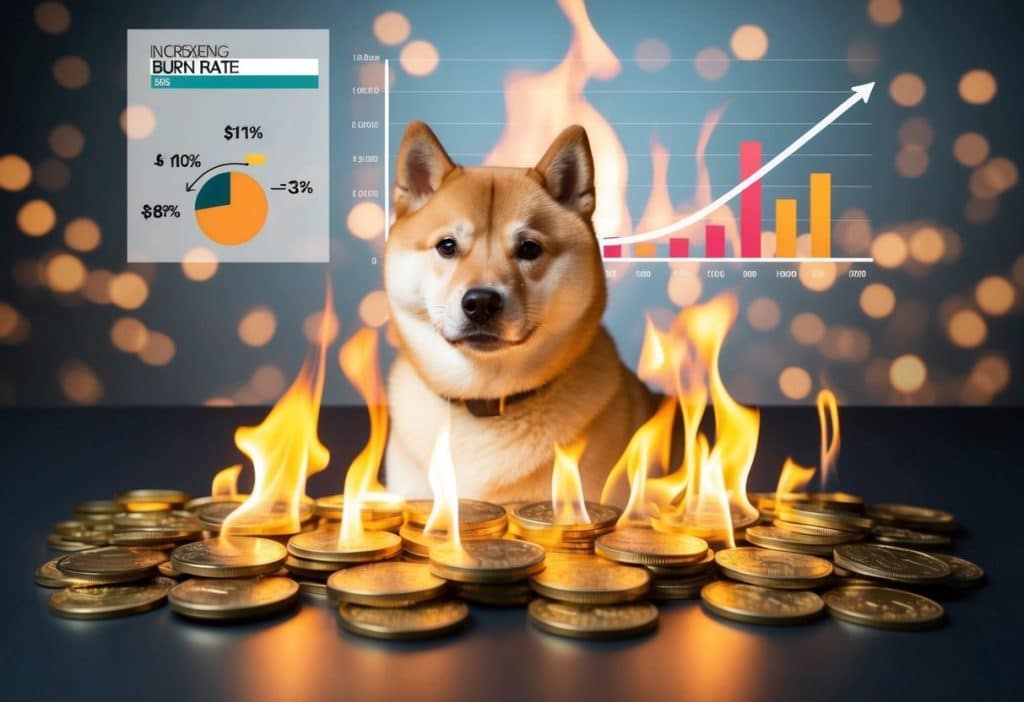

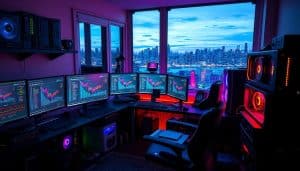
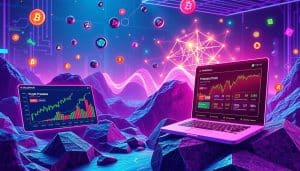
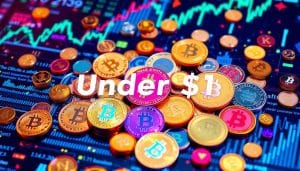
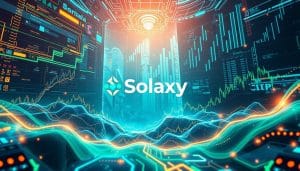
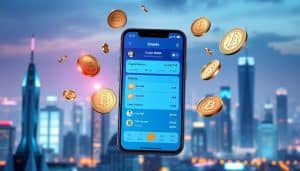
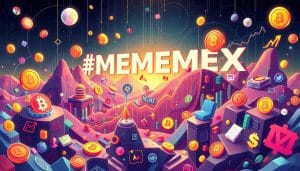
 Bitcoin
Bitcoin  Ethereum
Ethereum  Tether
Tether  XRP
XRP  Solana
Solana  USDC
USDC  Dogecoin
Dogecoin  Cardano
Cardano  TRON
TRON  Lido Staked Ether
Lido Staked Ether  Wrapped Bitcoin
Wrapped Bitcoin  Toncoin
Toncoin  Chainlink
Chainlink  LEO Token
LEO Token  Stellar
Stellar  Avalanche
Avalanche  Wrapped stETH
Wrapped stETH  USDS
USDS  Sui
Sui  Shiba Inu
Shiba Inu  Hedera
Hedera  Litecoin
Litecoin  Polkadot
Polkadot  Bitcoin Cash
Bitcoin Cash  MANTRA
MANTRA  Bitget Token
Bitget Token  WETH
WETH  Ethena USDe
Ethena USDe  Binance Bridged USDT (BNB Smart Chain)
Binance Bridged USDT (BNB Smart Chain)  Pi Network
Pi Network  Hyperliquid
Hyperliquid  Wrapped eETH
Wrapped eETH  WhiteBIT Coin
WhiteBIT Coin  Monero
Monero  Uniswap
Uniswap  Aptos
Aptos  Dai
Dai  Pepe
Pepe  NEAR Protocol
NEAR Protocol  sUSDS
sUSDS  OKB
OKB  Gate
Gate  Cronos
Cronos  Coinbase Wrapped BTC
Coinbase Wrapped BTC  Mantle
Mantle  Tokenize Xchange
Tokenize Xchange  Internet Computer
Internet Computer  Ethereum Classic
Ethereum Classic